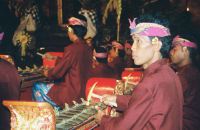
|
Xylophone musicians in a gamelan orchestra warm up the audience before the dances begin.
|
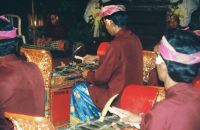
|
Gamelan musicians are incredibly skilled, individually performing complex rhythms that blend together at a frenetic pace.
|
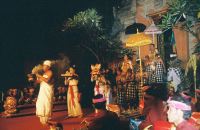
|
At the beginning of this performance, a priest leads the perfomers in a procession onto the stage.
|
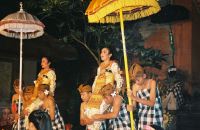
|
Two dancers are carried to the stage.
|
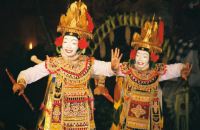
|
Masked dancers.
|
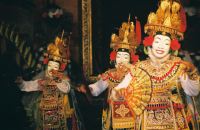
|
Sometimes it's har to tell whether men or women are performing a particular dance.
|
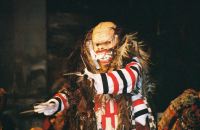
|
One of the many demons featured in Balinese dance.
|

|
In this epic dance, the evil witch Rangda, on the right, is plotting to kill a Balinese king.
|
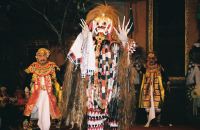
|
The Rangda is quite the evil beast; she sports a collection of human entrails as a necklace.
|
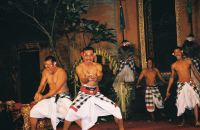
|
Rangda tries to make the king vulnerable by casting a spell on his bodyguards so they try to kill themselves...
|
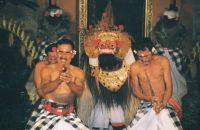
|
... But the good demon Barong, performed by two men in a giant costume, protects the bodyguards by casting a spell making it impossible for their daggers to penetrate their skin.
|

|
The Barong in all of its glory.
|
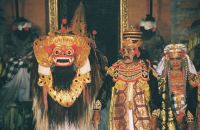
|
The Barong and the king, whose life has just be saved.
|
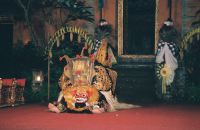
|
In this dance, the Barong performs solo, playfully prancing around the stage.
|
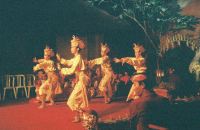
|
A group of young women imitate a group of deer playing in the forest.
|
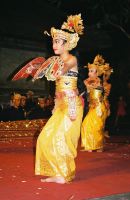
|
In a related dance, these girls perform as butterflies.
|
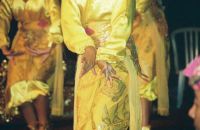
|
Every movement a dancer makes is choreographed, down to the position of the hands.
|
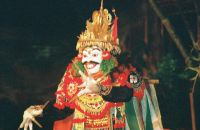
|
A jauk dance. The jauk is a playful, but sinister demon in which the dancer gets to improvise and even sometimes interact with the crowd.
|

|
|
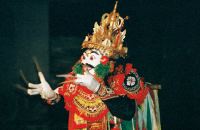
|
The jauk may look dangerous, but no members of the audience were hurt during this performance.
|
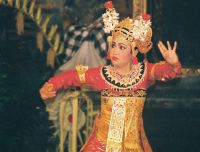
|
A legong dancer. Legongs are traditionally young girls, but you're more likely to see young woman dancing in performances for tourists.
|

|
|
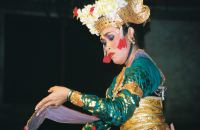
|
Another legong dancer.
|
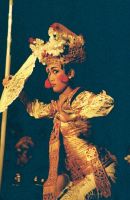
|
Legongs are well known for their dramatic eye movements.
|
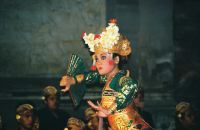
|
|
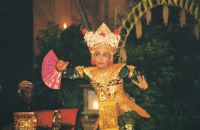
|
|
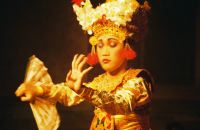
|
In this dance, a legong performs intricate movements with a paper fan, closing her eyes throughout the performance.
|

|
|
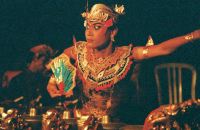
|
In a Kebyar Trompong dance, a male dancer is also a musician, playing solos on a gamelan gong with the rest of the orchestra.
|
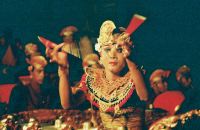
|
The Kebyar Trompong dancer twirls his drumsticks.
|
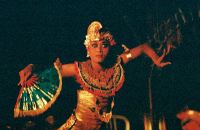
|
The Kebya Trompong dance was made famous in the 1920s by a flamboyant dancer named Mario.
|
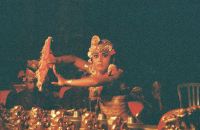
|
|
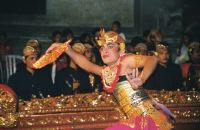
|
The same dancer performs another Kebyar dance known as the Kebyar Duduk, which is performed in a sitting position.
|
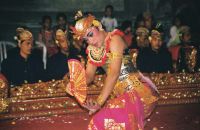
|
|
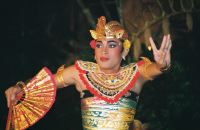
|
|
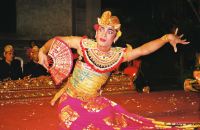
|
|
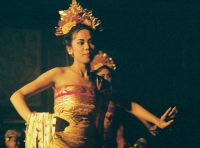
|
In this dance, a group of young women start off the night's performances by showering the stage with flower petals, carried in a metal bowl.
|
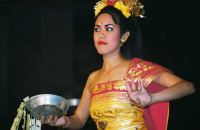
|
|
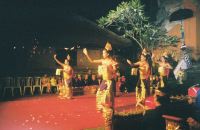
|
Flower petals fall to the stage.
|
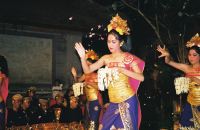
|
|
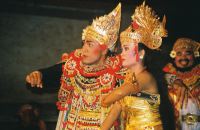
|
A dance based on a story from the Ramayana in which a prince falls in love.
|
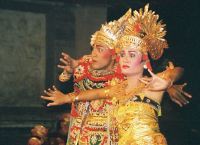
|
|
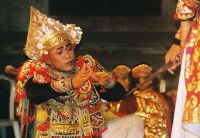
|
|
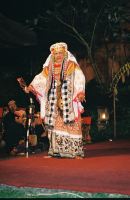
|
The old king, father of the prince.
|











































